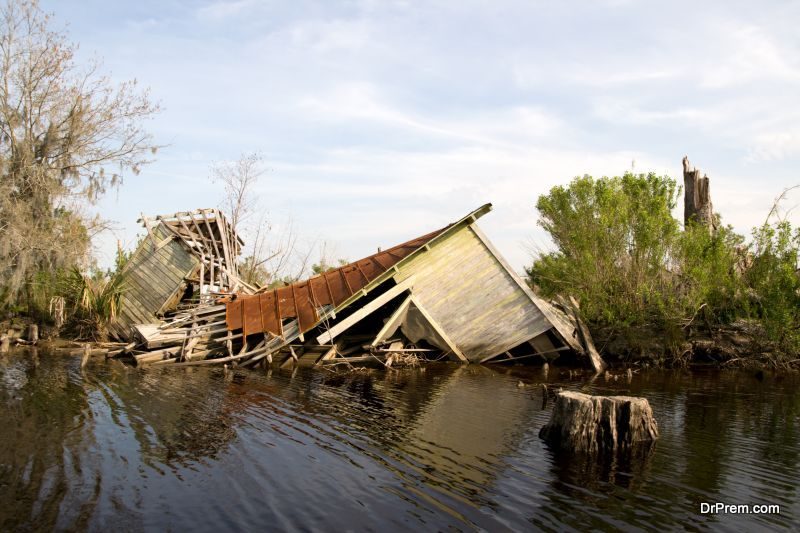It was only for Artificial intelligence at work, Ontario’s giant power distribution system Hydro One operated so fast and efficiently after the region was hit by a raging storm in April’2018 with torrents and gales picking on 60 miles an hour.
 Within 4 days it had reinstated electricity to consumer’s domestic and business infrastructure. Use of artificial intelligence for emergency management couldn’t have been demonstrated better.
Within 4 days it had reinstated electricity to consumer’s domestic and business infrastructure. Use of artificial intelligence for emergency management couldn’t have been demonstrated better.
It was a brilliant combination of Artificial intelligence technology and facilities of IBM’s Weather Co Subsidiary. This tool could predict the intensity of storm, its direction of travel and likely disaster zone. Hydro One exactly knew where to mobilize its 1400 vanguard crew which helped in quick restoration of power and handling frantic calls from 130000 customers.
The cost of natural disasters is astoundingly high. Governments are struggling in providing disaster relief quickly with the help of artificial intelligence, machine learning and natural language processing (NLP).
The significant role of artificial intelligence for emergency management:
 As per data supplied by National Oceanic and Atmospheric Administration from 1980 to 2017, in the US, natural calamities produced nightmares. They have contributed to USD 1.5 trillion worth of property damage.
As per data supplied by National Oceanic and Atmospheric Administration from 1980 to 2017, in the US, natural calamities produced nightmares. They have contributed to USD 1.5 trillion worth of property damage.
Since the early 2000s, weather forecasting has improved dramatically, courtesy a rapid increase in the use of sensors to track weather data and enhanced capability of computers in processing data from a wide range of sources.
But Artificial intelligence has turned into a key tool for accurate early warning signal. It can efficiently scan years of historical data of storms, hurricanes and earthquakes within seconds and predict the outcomes of impending disaster better.
Predicting natural disasters with precision has become an important factor in saving human life and minimizing property damage if planned properly. The accuracy of prediction improves as the time between predictions and approaching disaster shortens owing to adding real-time data.
IBM’s outage prediction gadget operates with around 70 % perfection and is used extensively throughout the US. Time of prediction is an important factor for evacuation and it forecasts 72 hours before the actual storm strikes.
Combination of Artificial intelligence and Machine Learning (ML) can be a game changer in disaster management:
 Accurate forecasting of climate changes, weather whims and natural calamities has turned into a matter of life and death. Providing disaster relief in time depends a lot on the application of early warning signals backed by artificial intelligence.
Accurate forecasting of climate changes, weather whims and natural calamities has turned into a matter of life and death. Providing disaster relief in time depends a lot on the application of early warning signals backed by artificial intelligence.
Cities that can predict precisely the scale, timing and location of damage are better equipped with mobilizing resources. Resources could be dispatched fast enough for providing disaster reliefs.
A new breed of Artificial Intelligence for emergency management is coming up by incorporating Machine Learning and Natural Language Processing (NLP) tool. The users can place specific targeted questions and the response will be quick and helpful after scanning a huge mess of real-world data. For smarter analysis and better disaster relief, Artificial Intelligence is indispensable.
Artificial Intelligence for Disaster Response (AIDR) solutions:
 Image Source : image.slidesharecdn.com
Image Source : image.slidesharecdn.com
Artificial intelligence for emergency management is rapidly gaining application. Business organizations and Universities have been dedicating their resources on research and development of Artificial intelligence tools.
Drones, sensors and robots are being deployed to provide accurate information about damages properties and landscapes to help in safer and quicker rescue operations. Several start-ups have come up with AI solutions to help in disaster management. Some of them are listed below.
QCRI (Qatar Computing Research Institute):
 Image Source’: marhaba.qa
Image Source’: marhaba.qa
A free online tool developed by the Qatar Foundation of Education, Science and community development. Its objective is to increase the efficiency of agencies and voluntary services in times of disaster. The tool with the help of machine learning automatically can read the texts and posts from the social media platforms related to a particular crisis and help in proper deployment of rescue forces.
1Concern:
 Image Source : un-spider.org
Image Source : un-spider.org
It gives a comprehensive picture of the emergency rescue operations to be carried out by different rescue centers. It assists the centers in proper allocation of resources and helps in planning effective modules. These modules have the potential to identify the vulnerable areas likely to be worst affected. It has the capability of mapping of about 163, 696 square miles and so far has covered 39 million people.
BlueLine Grid:
 Image Source : iqt.org
Image Source : iqt.org
A mobile communication platform aimed to help in rescue operations during disasters by connecting all users to the first line of response, security teams and law enforcement authorities through texts and voice messages and location services. The users can quickly reach out to public employees according to the geographical area or proximity and maintain an efficient channel for communication and collaboration.
A start-up at Palo Alto, Calif has developed an Artificial intelligence tool used by some emergency response centers. Other government agencies in California have also followed suit. The intention is to devise strategies for mitigating whack of the earthquake on a zonal basis.
Artificial Intelligence for Disaster Response has been very effective in managing many natural disasters across the globe since these systems help to be reactive as well as proactive.
Artificial Intelligence in insurance management:
 The insurance companies depend immensely on the efficacy of artificial intelligence for emergency management. It helps insurers to analyze the risk element against probable damage, plan business, respond and market flexibility of policies. More accurate the prediction by AI better would it be for insurers to figuring out risks. Real time mapping technology is another advanced tool for bringing in innovative changes in disaster monitoring.
The insurance companies depend immensely on the efficacy of artificial intelligence for emergency management. It helps insurers to analyze the risk element against probable damage, plan business, respond and market flexibility of policies. More accurate the prediction by AI better would it be for insurers to figuring out risks. Real time mapping technology is another advanced tool for bringing in innovative changes in disaster monitoring.
Efficient survival strategy by Artificial Intelligence:
 The use of artificial intelligence for emergency management is a survival strategy if not more. Natural calamities are in a way wrath of nature leaving a trail of death and destruction. About 2 billion people have been hit by different natural disasters from 2004-13.
The use of artificial intelligence for emergency management is a survival strategy if not more. Natural calamities are in a way wrath of nature leaving a trail of death and destruction. About 2 billion people have been hit by different natural disasters from 2004-13.
Predicting natural disasters is the only way to minimize this apocalypse. Properties and life will have a fair chance of survival no sooner early warning system beeps. Artificial intelligence services can come as your rescuer making relief measures effective. According to the science journal ‘ Scientific American’, new disaster response techniques will be crucial to saving life and reducing destruction to infrastructure.
How do we see human perspective in emergency management?
 While talking about machines in artificial intelligence in emergency management, one shouldn’t write off the human element. Potential inherent in a crowd which is basically an amalgam of human beings is not to be overlooked. Crowd-sourced information goes a long way in delivering relief during the natural catastrophe.
While talking about machines in artificial intelligence in emergency management, one shouldn’t write off the human element. Potential inherent in a crowd which is basically an amalgam of human beings is not to be overlooked. Crowd-sourced information goes a long way in delivering relief during the natural catastrophe.
Not only is the scientific evaluation of the epicenter of a quake important. The shifting human standpoint in relation to a disaster is pivotal. For example, drones, robots and sensors used for fast and precise evaluation of data on catastrophe struck landscapes and buildings can even locate victims trapped inside the debris. This helps rescue workers to speedily access the victims and launch efficient relief operations.



